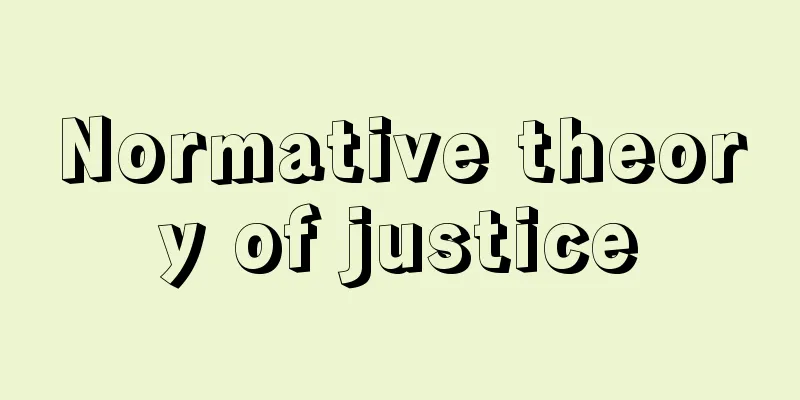Soka Gakkai

|
This is a Lotus Sutra lay Buddhist organization. It began as the Soka Kyoiku Gakkai, which was founded in November 1930 (Showa 5) by educator and educational scholar Makiguchi Tsunesaburo (1871-1944) together with fellow educator Toda Josei (1900-58). They regard Nichiren as the true Buddha of the Latter Day of the Law, and their basic religious practice is faith in the Kaidan Daihonzon (mandala) depicted in 1279 (Kōan 2) and chanting Namu Myoho Renge Kyo. They aim to spread Nichiren Buddhism and promote the ideas of the Lotus Sutra, as well as to realize a peaceful society based on Buddhist ideas. [Tsuyoshi Nakano] HistoryThe Soka Kyoiku Gakkai was originally an educational reform movement based on Makiguchi's educational theory, but it gradually came to assert that a religious revolution based on the teachings of Nichiren was necessary to underpin social reform through education, and after its official founding ceremony in 1937 (Showa 12), it focused on missionary activities. It grew to about 3,000 members in Tokyo, Yokohama, Kitakyushu and other areas, but was persecuted for opposing the "religious control measures" of the time and refusing to merge sects or receive Ise Shrine amulets, and in July 1943, 21 executives, including Makiguchi and Toda, were arrested on suspicion of violating the Peace Preservation Law and lèse majesté, and Makiguchi died in prison. In 1946 (Showa 21), Toda re-established the organization under the name "Soka Gakkai" and five years later became its second president, beginning vigorous missionary work. Based on his religious experiences in prison, he preached a "theory of life," arguing that the ultimate goal of life is transformation of life through faith, in other words, "human revolution," and as a way of putting this into practice he emphasized chanting to the honzon and shakubuku practices (refuting other sects). Thanks to these shakubuku activities, along with the vertical organization that was effective in maintaining ties between believers who moved frequently between places of residence and workplaces during the urbanization period after World War II, and the strengthening of the youth division, by the time of Toda's death in 1958, the organization had reached 800,000 member households. On the other hand, Nichiren's thought includes a vision of social integration, such as the construction of a Buddhist land in Japan in the Latter Days of the Law and the establishment of a state of peace in the country, while the idea of "a life of great virtue" advocated by Makiguchi in his value theory means "the realization of the social public good," and was also an expansion of Nichiren's social ideals. In response to this, Toda preached the "Obutsu Myogo Theory," and argued that we should aim to realize an ideal government based on the Buddhist spirit of compassion. He also believed that in order to realize this ideal government, it was necessary to establish a correct religious and spiritual culture among the entire nation, and that the establishment of the Honmon Kaidan, which was Nichiren's last wish, would be demonstrated by the unanimity of the people, and he advocated the construction of a Kaidan by a resolution in the House of Councilors, the so-called National Kaidan. However, this was a naive idea that was linked to the general public's expectations at the time that the House of Councilors was a place that reflected the will of the entire nation, and was later retracted. In 1955 (Showa 30), under the slogan "Fair Elections" and "Police Cleansing," the group entered local assemblies, and the following year entered the House of Councillors. Its entry into politics became more serious under the term of third chairman Daisaku Ikeda (1928-), who succeeded Toda in 1960. In 1964, the religious political party Komeito was formed, and three years later, 25 members were sent to the House of Representatives, and it subsequently developed into the second largest opposition party. However, its active participation in politics was met with opposition from existing forces over the nature of religion and politics under the separation of religion and state, and in 1970, a "problem of speech" arose in the wake of an incident that occurred at the time in which a book criticizing the Soka Gakkai was blocked from publication. This marked the organizational and functional differentiation of the Soka Gakkai and the party, with the Komeito changing direction to become a national political party, and the social activities of the Soka Gakkai focusing on education, culture, and peace movements. It was made clear that the intention was for the construction of a public platform, and the Shohondo Hall was completed in 1972 at Taiseki-ji Temple, the head temple of the Nichiren Shoshu sect, in Fujinomiya City, Shizuoka Prefecture (though it was demolished in 1999 following conflicts with the sect, as described below). In the 40th House of Representatives election in 1993, the Komeito secured 51 seats and 24 seats in the House of Councillors, becoming an influential party in the era of multi-party rule. In 1993, the LDP government that had ruled for 38 years since the end of World War II collapsed and a non-LDP coalition government was formed, but the Komeito sent four cabinet ministers and played a part in the government. This was the first time in Japanese history that a political party supported primarily by a religious organization had participated in government. During the time of Chairman Ikeda Daisaku, the cult's influence grew significantly, reaching 7.5 million member households in 1970 (Showa 45). The basic organization was also improved, with age-specific training organizations such as the Men's Division, Student Division, High School Division, Middle School Division, and Junior Division, as well as cultural bureau divisions for education, art, and academics, and regional block organizations were created. In addition, various affiliated educational and cultural organizations were also founded. Overseas missionary work also progressed, and in 1975 the international organization "Soka Gakkai International" was formed, with members reaching approximately 1.502 million in 163 countries and regions (2000). [Tsuyoshi Nakano] Relationship with Nichiren ShoshuAlthough Soka Gakkai was a small Nichiren-based religious organization, Makiguchi encountered Nichiren and the Lotus Sutra through Nichiren Shoshu, which has unique doctrines such as the theory of the original Buddha, and began his activities as a follower of Nichiren Shoshu, and as such, Soka Gakkai has come to be recognized by both itself and others as a group of Nichiren Shoshu believers. The combination of a traditional religious organization and a large group of believers with the characteristics of a new religion is extremely rare even as a religious organization, and it has been typically seen as a "symbiotic" or "coexistent" type of religious organization. However, between Nichiren Shoshu, which is priest-centered, and Soka Gakkai, which focuses on believer activities, tensions and conflicts inevitably arose on several occasions. During World War II, Makiguchi refused to accept the Ise Shrine talismans, but Nichiren Shoshu accepted them. There have been other conflicts in the past, such as the denunciation of Ogasawara Jimon, a monk who cooperated with the military during World War II by preaching the Shinponbujaku theory (1952), and the conflict over the interpretation of doctrine surrounding the Shohondo (1972). In 1990, a conflict that began with Shoshu's request to raise the fee for worship at the Kaidan Honzon (main altar), escalated to Nichiren Shoshu's excommunication of Soka Gakkai. Soka Gakkai took this as an opportunity to develop its original movement away from the supervision and control of the sect, and established a system that was not dependent on monks for various ceremonies, such as holding funerals attended only by believers, called "friend funerals," and awarding honzons established by the sect, thereby strengthening its character as a lay Buddhist sect. [Tsuyoshi Nakano] Current StatusThe number of households that are members in Japan is 8.21 million (2,000). The number of believers is not made public. The headquarters is located in Shinano-cho, Shinjuku-ku, Tokyo, and the organization publishes the daily newspaper and magazine "Seikyo Shimbun" and the monthly "Daibyakurenge," among others. Affiliated organizations include Soka Gakuen and Soka University (both incorporated educational institutions), the Min-On Association, Fuji Art Museum, and the Institute of Oriental Philosophy (all incorporated foundations). Other publishers affiliated with the Soka Gakkai include Ushio Publishing and Daisanbunmeisha. [Tsuyoshi Nakano] "The White Research Team's Report on the Soka Gakkai, written by J. W. White and translated by the Society for the Study of Sociology of Religion (1971, Yuensha)" ▽ "The Ideals and Practice of Soka Gakkai, edited by the Lotus Sutra Study Group, University of Tokyo (1975, Daisanbunmeisha)" ▽ "The Human Revolution, written by Daisaku Ikeda, all 12 volumes (1965-1993, Seikyo Shimbun)" ▽ "The New Human Revolution, written by Daisaku Ikeda (1998-, Seikyo Shimbun)" ▽ "A Time to Chant: A Sociological Study of the Soka Gakkai in the UK, written by B. R. Wilson (1997, Kinokuniya Shoten)" [References] | | | | | | | | Renge Kyo| | |Source: Shogakukan Encyclopedia Nipponica About Encyclopedia Nipponica Information | Legend |
|
法華(ほっけ)系の在家仏教団体。教育者・教育学者であった牧口常三郎(まきぐちつねさぶろう)(1871―1944)が、同じく教育者であった戸田城聖(とだじょうせい)(1900―58)とともに1930年(昭和5)11月に設立した「創価教育学会」に始まる。日蓮(にちれん)を末法の本仏と仰ぎ、1279年(弘安2)図顕の「戒壇大本尊」(曼荼羅(まんだら))信仰と、南無妙法蓮華経(なむみょうほうれんげきょう)の唱題行を基本的信仰実践とし、日蓮仏教の宣布と「法華経」思想の宣揚、さらに仏教思想に基づく平和的社会の実現などを目ざしている。 [中野 毅] 沿革「創価教育学会」は、当初、牧口教育理論に基づく教育改革運動団体であったが、教育による社会改革の根底には日蓮の教説に基づく宗教革命が必要であるとの主張をしだいに強く掲げるようになり、1937年(昭和12)正式に発会式をあげたあとは布教活動が中心となった。東京、横浜、北九州地域などで会員約3000人に発展したが、当時の「宗教統制策」に反対し、宗門合同や伊勢(いせ)神宮神札拝受を拒絶したため弾圧され、43年7月治安維持法違反と不敬罪容疑で牧口、戸田ら幹部21名が検挙され、牧口は獄死した。 1946年(昭和21)戸田は同会を「創価学会」の名で再建、5年後に第2代会長に就任し、活発な布教活動を開始した。彼は獄中での宗教体験をもとに「生命論」を説き、人生の究極目的は信仰による生命の変革、すなわち「人間革命」であると主張し、その実践として本尊への唱題と折伏(しゃくぶく)行(他宗破折)を強調した。この折伏活動と、第二次世界大戦後の都市化時代に居住地や職場の移動が激しい信者間の連携を保つのに有効なタテ線組織、さらに青年部の強化などの要因によって、戸田が没した1958年には会員世帯80万に達した。 他方、日蓮の思想には末法の日本における仏国土の建設、立正安国(りっしょうあんこく)という社会統合へのビジョンがみられるが、牧口が価値論で主張した「大善生活」という理念は、「社会的公共善の実現」を意味し、日蓮の社会的理念の展開でもあった。それを受けて戸田は「王仏冥合(おうぶつみょうごう)論」を説き、仏教の慈悲の精神に基づく理想政治の実現を目ざすべきと主張した。また、その理想政治の実現には国民全体に正しい宗教的精神文化が確立されることが必要と考え、その確立を示すのが、日蓮の遺志であった本門戒壇を国民の総意によって建立することと考えて、参議院での議決による戒壇建立、いわゆる国立戒壇の建立を主張した。しかしそれは、参議院こそが国民全体の意思の反映の場であるという、当時の国民一般の期待感と結び付いた素朴な発想であり、のちに撤回された。 1955年(昭和30)には公明選挙・政界浄化をスローガンに地方議会に、翌年は参議院に進出した。政界進出は、60年に戸田の後を継いだ第3代会長池田大作(1928― )の時代に本格化した。1964年宗教政党公明党を結成、3年後には25名を衆議院に送り、その後野党第二党に発展した。しかし、政治への積極的参加は、政教分離制度下での宗教と政治のあり方をめぐって既存の諸勢力からの反発を受け、1970年、おりから発生した学会批判書の出版阻害事件をきっかけに「言論問題」が発生した。それを機に学会と党との組織的・機能的分化がなされ、公明党は国民政党へと方向転換するとともに、学会の社会的活動は教育、文化、平和運動に重点が置かれるようになった。戒壇建立も民衆立が本意であることが明確にされ、1972年静岡県富士宮(ふじのみや)市の日蓮正宗(しょうしゅう)総本山大石(たいせき)寺に正本堂として完成した(後述する宗門との対立を経て1999年解体)。 公明党は1993年(平成5)の第40回衆議院選挙で51議席を確保し、参議院でも24議席をもつなど、多党化時代に入って有力な位置を占めるようになった。同93年には第二次世界大戦後38年間におよぶ自民党政権が崩壊し、非自民連立政権が誕生したが、公明党は4人の閣僚を送り、政権の一翼を担うこととなった。宗教団体を主たる支持母体とした政党が政権に参加したのは、日本史上、初のできごとであった。 会長池田大作時代には、教勢が大きくのび、1970年(昭和45)には会員世帯が750万に達した。教団基本組織も整備され、男子部、学生部、高等部、中等部、少年部などの年齢別育成組織や教育・芸術・学術の文化局各部を結成したり、地域ごとのブロック組織などがつくられていった。さらに教育・文化面での各種外郭団体も創設された。海外布教も進展し、75年には国際組織「創価学会インタナショナル」が結成され、会員は163か国・地域、約150万2000人に達した(2000)。 [中野 毅] 日蓮正宗との関係創価学会は、牧口が、日蓮系教団のなかで弱小ではあったが、本仏論など独特の教義をもつ日蓮正宗を通して日蓮や法華経に出会い、その信徒として活動を始めたこともあって、日蓮正宗の信徒集団として自他ともに認めてきた。伝統教団と新宗教としての性格を有する巨大な信徒集団の結合は、教団の形態としてもきわめて珍しく、類型的に「共棲(きょうせい)」または「共生」型教団としてとらえられてきた。しかし、僧侶中心主義の性格を有する日蓮正宗と、信徒活動中心の創価学会との間には、避けがたい緊張と対立が何度か生まれた。第二次世界大戦中、伊勢神宮神札拝受を牧口は拒絶したが、日蓮正宗は受け入れたことをはじめとし、神本仏迹(しんぽんぶっじゃく)論を説いて第二次世界大戦中に軍部に協力した僧、小笠原慈聞の糾弾事件(1952年)、正本堂(1972年)をめぐる教義解釈の確執などが、これまでも起こっていた。1990年(平成2)、戒壇本尊への参拝料を値上げしようとした正宗の要求に端を発した対立は、日蓮正宗による創価学会の破門という事態に発展した。創価学会は、これを宗門の監督・統制から離れて、本来の運動を展開する機会としてとらえ、信徒のみによる葬儀「友人葬」を実施し、学会制定の本尊を授与するなど、各種儀礼において、僧侶に依存しない体制を整え、在家主義仏教教団としての性格を強めている。 [中野 毅] 現況国内会員世帯数821万(2000)。信者数は公表されていない。本部を東京都新宿区信濃(しなの)町に置き、機関紙・誌『聖教新聞』(日刊)、『大白蓮華(だいびゃくれんげ)』(月刊)その他を発行。外郭団体に創価学園、創価大学(以上学校法人)、民主音楽協会、富士美術館、東洋哲学研究所(以上財団法人)がある。また学会系の出版社に潮(うしお)出版社、第三文明社などがある。 [中野 毅] 『J・W・ホワイト著、宗教社会学研究会訳『ホワイト調査班 創価学会レポート』(1971・雄演社)』▽『東京大学法華経研究会編『創価学会の理念と実践』(1975・第三文明社)』▽『池田大作著『人間革命』全12巻(1965~93・聖教新聞社)』▽『池田大作著『新・人間革命』(1998~ ・聖教新聞社)』▽『B・R・ウィルソン著『タイム・トゥ・チャント――イギリス創価学会の社会学的考察』(1997・紀伊國屋書店)』 [参照項目] | | | | | | | | | | |出典 小学館 日本大百科全書(ニッポニカ)日本大百科全書(ニッポニカ)について 情報 | 凡例 |
>>: Song Hui Yao Shi Guo (English translation)
Recommend
Nyaaya (English spelling)
… [India] Indian logic was developed independentl...
Eastern Alliance - Tongmaeng (English spelling)
Also written as Dongmyeong. A ritual to worship th...
Restoring force - Restoring force
Generally, it refers to the force that tries to re...
Oil dialect - Oil dialect
...When we simply say French, we often mean this ...
Kaizu Osaki
(Takashima City, Shiga Prefecture) A tourist attra...
Soestdijk
… The Royal Palace, located in Dam Square in the ...
Public Speaking Hall
…Until then, the custom of giving speeches, as wa...
Ulloa, F.de (English spelling) UlloaFde
…Irrigated cotton is cultivated in the northern p...
Aztec culture
The culture flourished from the 14th century until...
Yoriki Uno - More
...A group of Yamato warriors in the Heian and ea...
Torreya grandis (English spelling) Torreyagrandis
… [Toshio Hamatani]. … *Some of the terminology t...
Guevara - Ernesto "Che" Guevara
An outstanding revolutionary born in Latin Americ...
Kai Shek
Harder than rock. See the entry for the character ...
Hearing (Hearing)
It is an administrative procedure that leads to a ...
Father-in-law - Shouto
1. (Father-in-law) The father of one's husband...









